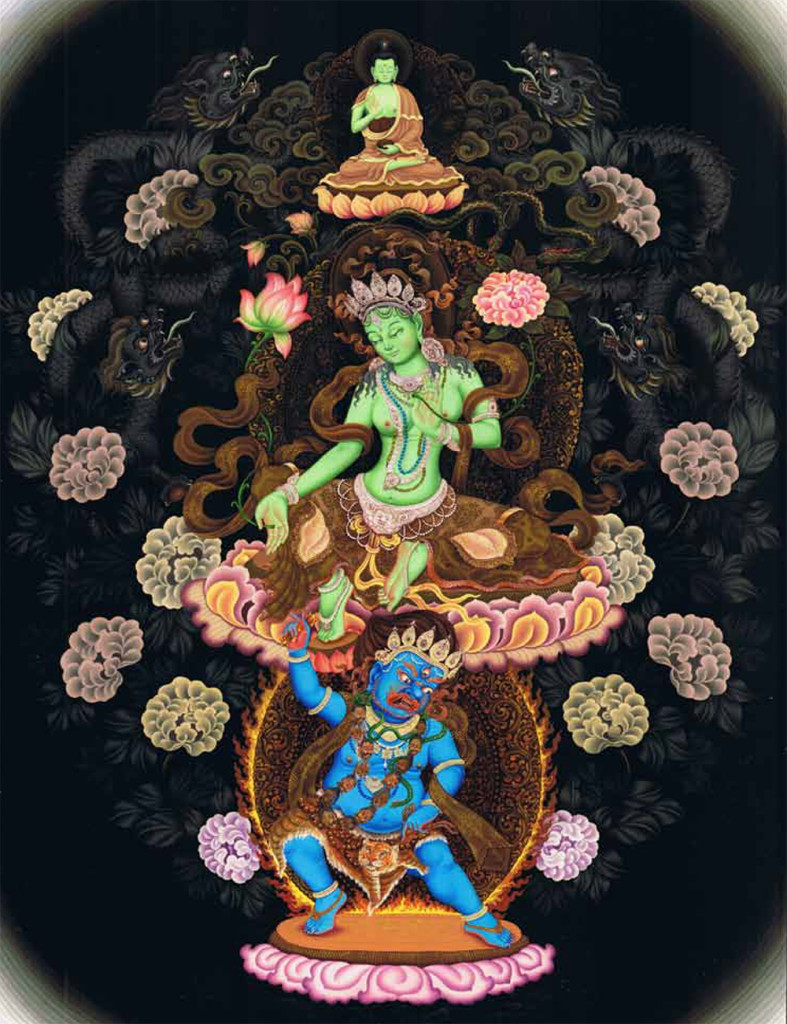Art expert explains the meaning and tradition behind Amrit Dangol’s “Amoghasiddhi Buddha, Green Tara and Vajrapani”
By Siddhartha V. Shah
Amoghasiddhi Buddha, one of the Five Wisdom Buddhas, is the Buddha of Unfailing Success and Lord of Karma. Adorned with jewels and divine silk ornaments, he sits upon an open lotus blossom with one hand raised in the abhaya mudra (fear-not gesture) and in the other, holds a small bowl with an offering for his devotees.
Green Tara (also known as Arya Tara) is the female emanation of Amoghasiddhi — young, beautiful and fiercely committed to protecting all sentient beings from fear. With emerald green skin and attractive eyes, she is a Bodhisattva (an enlightened being) of compassion — as symbolized by the lotus stalk. Her thumb and ring finger are joined in the protective gesture of giving refuge that also symbolizes the union of wisdom and compassion. Her other extended fingers represent the three jewels: Buddha, dharma (the universal teaching of the Buddha) and sangha (community).
Underneath these figures is the wrathful protector deity Vajrapani, who represents the power of all of the Buddhas. His taut posture in the active warrior pose (pratayalidha) is based on an archer’s stance and resembles the en garde position in western fencing. Vajrapani’s outstretched right hand brandishes a vajra (thunderbolt) and his left hand deftly holds a lasso to bind demons. His presence supports Arya Tara’s commitment to protect spiritual aspirants who are on the path from the forces that seek to deter them from the journey of liberation.
Based in Kathmandu, Nepal, artist Amrit Dangol is one of the greatest painters of the modern Newar movement and a devotee of Green Tara. The Newars are the indigenous people of Kathmandu, lauded for centuries for their incomparable skills in painting, woodcarving and bronze casting.


























No Responses to “Painter Amrit Dangol portrays Amoghasiddhi Buddha, Green Tara and Vajrapani”